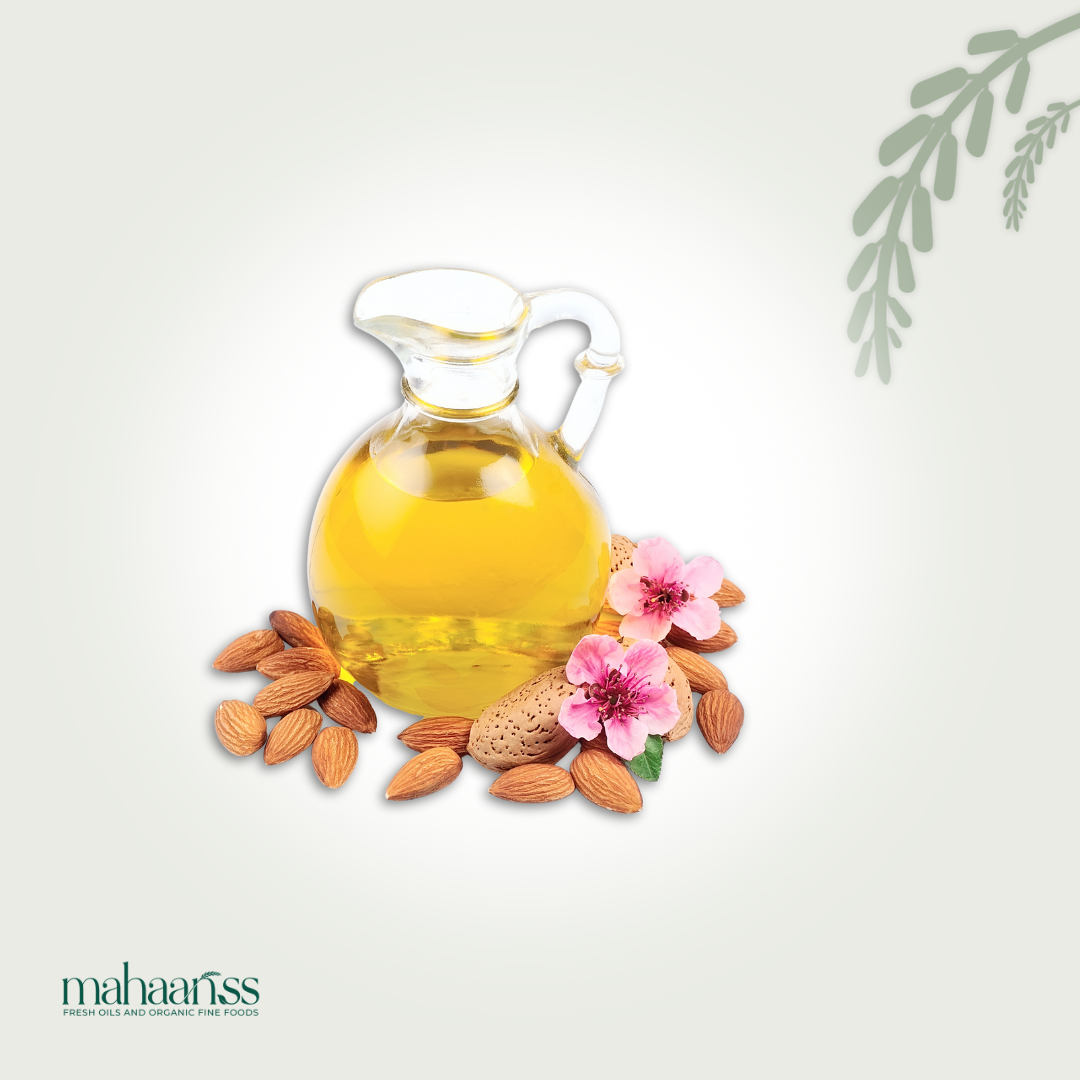
Top 5 Health Benefits of Cooking with Groundnut Oil
Introduction
When it comes to cooking oils, the market is full of options. From olive and sunflower to canola and mustard, each has its place in the kitchen. But one oil that’s often underestimated and deserves more attention is groundnut oil, also known as peanut oil.
More people are becoming health-conscious and looking for heart-healthy cooking oils that not only taste good but also support their well-being. That’s where cooking with groundnut oil stands out.
Groundnut oil is packed with nutrients and healthy fats. It has a rich, nutty flavor that enhances both traditional and modern recipes. What makes it even more special is its balance. It’s great for deep-frying, sautéing, and stir-frying, all while offering real health value.
In this blog, we’ll explore the top five groundnut oil benefits you should know about. Whether you’re looking to improve your heart health, manage cholesterol, or just make better food choices, cooking with groundnut oil could be the upgrade your kitchen and body both need.
What is Groundnut Oil?
Groundnut oil, also known as peanut oil, is a vegetable oil made by pressing peanuts. It’s widely used in Asian, African, and Indian cooking, known for its unique aroma and high smoke point.
There are several types of groundnut oil:
a. Refined peanut oil, commonly used in restaurants
b. Cold-pressed or wood-pressed groundnut oil, preferred for its nutritional quality
c. Roasted peanut oil, which has a stronger flavor and is often used for finishing dishes
What makes this oil especially useful is its stability at high temperatures. It doesn’t break down easily when heated, making it ideal for deep-frying, roasting, and sautéing.
In Indian kitchens, it’s often used in everything from poha to bhindi fry and classic tadka. The uses of groundnut oil in Indian cooking go beyond flavor, it’s deeply rooted in Ayurvedic principles that support balance and digestion.
It’s also known for being shelf-stable, so it can be stored longer than many other oils without going rancid.
3. Groundnut Oil Nutrition at a Glance
Before we dive into the health benefits, it helps to understand what’s actually in groundnut oil. The groundnut oil nutrition profile is impressive and plays a key role in its growing popularity as a healthy cooking oil alternative.
Here's a breakdown of what makes it so valuable:
a. Rich in monounsaturated fats (MUFA): Nearly 50% of groundnut oil is made up of monounsaturated fats. These are the same heart-friendly fats found in olive oil, known to help lower bad cholesterol (LDL) and boost good cholesterol (HDL).
b. Contains polyunsaturated fats (PUFA): These essential fats support brain function, hormone production, and overall cell health.
c. Low in saturated fat: This makes it a smart choice for people looking to maintain or reduce their cholesterol levels.
d. Naturally cholesterol-free: This is a major plus for heart health and one of the top peanut oil health benefits.
e. High in vitamin E (antioxidant): One tablespoon of groundnut oil provides a good amount of vitamin E, which supports immune function, skin health, and protects cells from damage.
f. Calorie-dense, but nutrient-rich: Like all oils, it’s high in calories (about 120 per tablespoon), but these calories come from fats your body actually needs.

According to The Peanut Institute, incorporating peanut oil into your meals can help improve heart function, reduce inflammation, and even protect against chronic disease—when used in moderation.
So, if you're looking for a natural, flavorful, and nutrient-packed option, cooking with groundnut oil is a choice that blends taste with wellness.
Top 5 Groundnut Oil Benefits
If you want to make smarter choices in your kitchen, a simple place to start is by switching to healthier oils. One of the most underrated options is groundnut oil, also known as peanut oil. It’s rich in nutrients that benefit your body, inside and out.
Let’s break down the top 5 groundnut oil benefits and see how they support everything from your heart to your cooking habits.
1. Promotes Heart Health
When it comes to protecting your heart, what you cook matters. One of the key peanut oil health benefits is its heart-protective properties.
Groundnut oil is high in monounsaturated fats (MUFA)—the same kind of healthy fats found in olive oil. These fats help:
a. Lower bad cholesterol (LDL)
b. Raise good cholesterol (HDL)
c. Improve overall heart function
 This balance of fats makes groundnut oil one of the most effective heart-healthy cooking oils available today.
This balance of fats makes groundnut oil one of the most effective heart-healthy cooking oils available today.
A study published in the American Journal of Clinical Nutrition found that diets rich in monounsaturated fats reduce the risk of heart disease, especially when replacing saturated or trans fats. You can read more about this in this clinical review.
In addition to good fats, peanut oil contains phytosterols, plant-based compounds that help block the absorption of cholesterol in the intestines—giving your heart even more protection.
2. Rich in Antioxidants
One of the lesser-known but powerful groundnut oil benefits is its antioxidant content—especially vitamin E. This vitamin helps your body fight oxidative stress, a process that damages cells and can lead to inflammation and aging.
Vitamin E is also great for your skin, immune system, and even eye health. Just one tablespoon of groundnut oil offers a decent portion of your daily vitamin E requirement.
Antioxidants are essential in protecting your cells from free radicals—unstable molecules that can damage your DNA and increase the risk of chronic diseases.
According to the Journal of Food Science and Technology, vitamin E in peanut oil also helps preserve the oil itself, extending its shelf life without needing synthetic additives.
3. Supports Healthy Cholesterol Levels
Maintaining healthy cholesterol isn’t just about avoiding bad fats. It’s also about eating the right kind of fats—like the ones found in groundnut oil.
Cooking with groundnut oil helps improve your lipid profile by reducing LDL (bad cholesterol) without affecting HDL (good cholesterol). This is especially important for people dealing with high blood pressure or heart disease risk.
In a controlled study published in Lipids in Health and Disease, researchers found that peanut oil consumption improved cholesterol ratios in people with high cholesterol.
So, if you’re looking for a daily oil that supports heart health without compromising on taste, groundnut oil is a natural and proven choice.
4. Suitable for High-Heat Cooking
Unlike many delicate oils, groundnut oil has a high smoke point—around 450°F (232°C). That means it stays stable and safe to cook with even at very high temperatures.
Why is this important?
When oils are heated beyond their smoke point, they begin to break down and form toxic compounds like aldehydes and free radicals. These substances have been linked to inflammation and even some cancers.
Thanks to its stability, cooking with groundnut oil is ideal for:
a. Deep-frying
b. Searing
c. Roasting
d. Sautéing
It doesn’t degrade quickly, and it maintains the natural flavor of your ingredients without turning rancid or bitter.
This is one reason why groundnut oil is a favorite in Indian kitchens—its durability in high-heat cooking is unmatched.
5. Aids in Blood Sugar Control
Managing blood sugar isn’t just about cutting out sweets; it’s also about choosing ingredients that don’t spike your glucose levels.
Groundnut oil may help improve insulin sensitivity, especially when used as part of a balanced diet. This is one of the lesser-known but clinically studied peanut oil health benefits.
 A 2016 study published in Nutrients found that diets enriched with peanut oil improved blood sugar control and insulin response in people with type 2 diabetes.
A 2016 study published in Nutrients found that diets enriched with peanut oil improved blood sugar control and insulin response in people with type 2 diabetes.
This makes groundnut oil not only heart-friendly but also supportive of metabolic health, something that’s important for millions managing diabetes or pre-diabetes.
Uses of Groundnut Oil in Indian Cooking
In Indian kitchens, flavor, texture, and aroma matter just as much as nutrition. That’s why cooking with groundnut oil has been a trusted tradition for generations. Its natural richness, nutty aroma, and high smoke point make it one of the most versatile oils in Indian cuisine.
Common Traditional Uses
Groundnut oil is commonly used in:
a. Tadka (tempering) – The oil brings out the full flavor of spices like mustard seeds, cumin, and curry leaves. It’s a staple in dals and vegetable curries.
b. Deep-frying – Due to its stability at high temperatures, it’s perfect for frying pakoras, pooris, bhindi fry, and vada without leaving a greasy aftertaste.
c. Sautéing and stir-frying – Whether you’re making sabzis, paneer dishes, or upma, groundnut oil keeps its flavor intact while adding a rich depth to the dish.
d. Roasting spices or masalas – Its slightly sweet, earthy profile enhances spice blends without overpowering them.
Adds Nutritional Value to Indian Meals
Indian food is often cooked for longer durations with high heat. This means many oils can break down and lose nutrients—or worse, release harmful compounds. Thanks to its high stability, groundnut oil stays safe and retains most of its groundnut oil nutrition during cooking.
Plus, its natural vitamin E and monounsaturated fats blend well with Indian spices and lentils, supporting both flavor and wellness.
In short, when it comes to the uses of groundnut oil in Indian cooking, it shines in both everyday meals and festive feasts.
How to Choose the Right Groundnut Oil?
Not all groundnut oils are created equal. To get the full health benefits, it's important to choose oil that’s made without harmful additives or over-processing.
Here are key things to look for when selecting a truly healthy groundnut oil:
a. Cold-Pressed or Wood-Pressed
Opt for cold-pressed or wood-pressed groundnut oil. These are made using traditional extraction methods that don’t use heat or chemicals. As a result, they retain more of their original nutrients, making them one of the best heart-healthy cooking oils you can buy.
b. Unrefined and Chemical-Free
Check the label for words like unrefined, chemical-free, or virgin. Refined groundnut oil may be cheaper, but it’s often treated with chemicals that reduce nutritional quality.
Stick with chemical-free cooking oils to ensure your meals stay clean and nourishing.
c. Choose Organic or Non-GMO
If possible, go for certified organic or non-GMO groundnut oil. This ensures the peanuts used were grown without pesticides or genetically modified inputs—keeping the final oil closer to its natural state.
d. Stored in the Right Packaging
Groundnut oil should ideally be stored in:
1. Dark glass bottles
2. Steel containers
Avoid clear plastic bottles, as exposure to light and plastic can degrade the oil’s quality over time.
Conclusion
We often overlook cooking oil when thinking about eating healthier—but it’s one of the most important choices we make in the kitchen every day. Groundnut oil, or peanut oil, offers a unique combination of taste, tradition, and nutrition that few other oils can match.
Let’s recap the key reasons to consider cooking with groundnut oil:
a. It’s packed with monounsaturated fats, making it one of the best heart-healthy cooking oils
b. It’s rich in vitamin E and antioxidants
c. It helps maintain healthy cholesterol levels
d. It stays stable at high heat, which makes it perfect for Indian-style cooking
e. It may support blood sugar balance, especially in people managing diabetes
Beyond health, it’s also rooted in tradition. The uses of groundnut oil in Indian cooking go back generations, and for good reason. It works beautifully in everything from fried snacks to simple sabzis.
So, whether you're frying up a crispy dosa or tempering dal, using a clean, chemical-free cooking oil like Mahaanss groundnut oil means you're choosing both flavor and health. It’s a small shift that can lead to big changes in how you feel, cook, and live.

